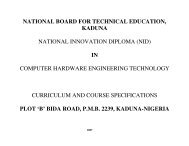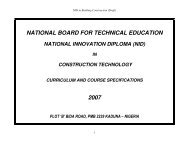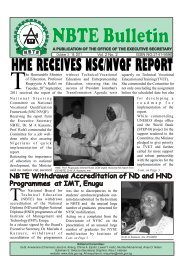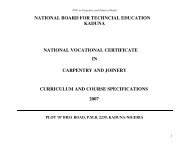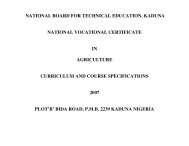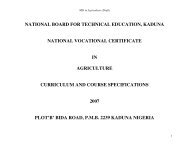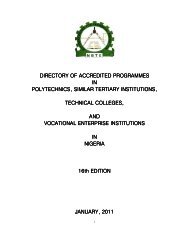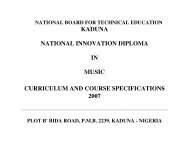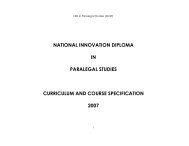- Page 1 and 2:
NID in Software Engineering (Draft)
- Page 3 and 4:
NID in Software Engineering (Draft)
- Page 5 and 6:
NID in Software Engineering (Draft)
- Page 7 and 8:
NID in Software Engineering (Draft)
- Page 9 and 10:
NID in Software Engineering (Draft)
- Page 11 and 12:
NID in Software Engineering (Draft)
- Page 13 and 14:
fffffff NID in Software Engineering
- Page 15 and 16:
fffffff NID in Software Engineering
- Page 17 and 18:
fffffff NID in Software Engineering
- Page 19 and 20:
fffffff NID in Software Engineering
- Page 21 and 22:
fffffff NID in Software Engineering
- Page 23 and 24:
fffffff NID in Software Engineering
- Page 25 and 26:
fffffff NID in Software Engineering
- Page 27 and 28:
fffffff NID in Software Engineering
- Page 29 and 30:
fffffff ASSESSMENT STRUCTURE NID in
- Page 31 and 32:
fffffff NID in Software Engineering
- Page 33 and 34:
fffffff NID in Software Engineering
- Page 35 and 36:
fffffff NID in Software Engineering
- Page 37 and 38:
fffffff NID in Software Engineering
- Page 39 and 40:
fffffff NID in Software Engineering
- Page 41 and 42:
fffffff NID in Software Engineering
- Page 43 and 44:
fffffff NID in Software Engineering
- Page 45 and 46:
fffffff ASSESSMENT STRUCTURE NID in
- Page 47 and 48:
fffffff NID in Software Engineering
- Page 49 and 50:
fffffff NID in Software Engineering
- Page 51 and 52:
fffffff ASSESSMENT STRUCTURE NID in
- Page 53 and 54:
fffffff NID in Software Engineering
- Page 55 and 56:
fffffff NID in Software Engineering
- Page 57 and 58:
fffffff ASSESSMENT STRUCTURE NID in
- Page 59 and 60:
fffffff NID in Software Engineering
- Page 61 and 62:
fffffff NID in Software Engineering
- Page 63 and 64:
fffffff NID in Software Engineering
- Page 65 and 66:
fffffff NID in Software Engineering
- Page 67 and 68:
fffffff NID in Software Engineering
- Page 69 and 70:
fffffff ASSESSMENT STRUCTURE NID in
- Page 71 and 72:
fffffff NID in Software Engineering
- Page 73 and 74:
fffffff NID in Software Engineering
- Page 75 and 76:
fffffff NID in Software Engineering
- Page 77 and 78:
fffffff NID in Software Engineering
- Page 79 and 80:
fffffff NID in Software Engineering
- Page 81 and 82:
fffffff NID in Software Engineering
- Page 83 and 84:
fffffff NID in Software Engineering
- Page 85 and 86:
fffffff NID in Software Engineering
- Page 87 and 88:
fffffff ASSESSMENT STRUCTURE NID in
- Page 89 and 90:
fffffff NID in Software Engineering
- Page 91 and 92:
fffffff ASSESSMENT STRUCTURE NID in
- Page 93 and 94:
fffffff NID in Software Engineering
- Page 95 and 96:
fffffff NID in Software Engineering
- Page 97 and 98:
fffffff NID in Software Engineering
- Page 99 and 100:
fffffff NID in Software Engineering
- Page 101 and 102:
fffffff NID in Software Engineering
- Page 103 and 104:
fffffff ASSESSMENT STRUCTURE NID in
- Page 105 and 106:
fffffff NID in Software Engineering
- Page 107 and 108:
fffffff NID in Software Engineering
- Page 109 and 110:
fffffff NID in Software Engineering
- Page 111 and 112:
fffffff NID in Software Engineering
- Page 113 and 114:
fffffff ASSESSMENT STRUCTURE NID in
- Page 115 and 116:
fffffff NID in Software Engineering
- Page 117 and 118:
fffffff NID in Software Engineering
- Page 119 and 120:
fffffff NID in Software Engineering
- Page 121 and 122:
fffffff NID in Software Engineering
- Page 123 and 124:
fffffff NID in Software Engineering
- Page 125 and 126:
fffffff NID in Software Engineering
- Page 127 and 128:
fffffff NID in Software Engineering
- Page 129 and 130:
fffffff ASSESSMENT STRUCTURE NID in
- Page 131 and 132:
fffffff NID in Software Engineering
- Page 133 and 134: fffffff NID in Software Engineering
- Page 135 and 136: fffffff NID in Software Engineering
- Page 137 and 138: fffffff ASSESSMENT STRUCTURE NID in
- Page 139 and 140: fffffff NID in Software Engineering
- Page 141 and 142: fffffff ASSESSMENT STRUCTURE NID in
- Page 143 and 144: fffffff NID in Software Engineering
- Page 145 and 146: fffffff NID in Software Engineering
- Page 147 and 148: fffffff NID in Software Engineering
- Page 149 and 150: fffffff ASSESSMENT STRUCTURE NID in
- Page 151 and 152: fffffff NID in Software Engineering
- Page 153 and 154: fffffff NID in Software Engineering
- Page 155 and 156: fffffff NID in Software Engineering
- Page 157 and 158: fffffff ASSESSMENT STRUCTURE NID in
- Page 159 and 160: fffffff NID in Software Engineering
- Page 161 and 162: fffffff NID in Software Engineering
- Page 163 and 164: fffffff NID in Software Engineering
- Page 165 and 166: fffffff NID in Software Engineering
- Page 167 and 168: fffffff NID in Software Engineering
- Page 169 and 170: fffffff NID in Software Engineering
- Page 171 and 172: fffffff ASSESSMENT STRUCTURE NID in
- Page 173 and 174: fffffff NID in Software Engineering
- Page 175 and 176: fffffff NID in Software Engineering
- Page 177 and 178: fffffff NID in Software Engineering
- Page 179 and 180: fffffff NID in Software Engineering
- Page 181 and 182: fffffff NID in Software Engineering
- Page 183: fffffff NID in Software Engineering
- Page 187 and 188: fffffff NID in Software Engineering
- Page 189 and 190: fffffff NID in Software Engineering
- Page 191 and 192: fffffff NID in Software Engineering



